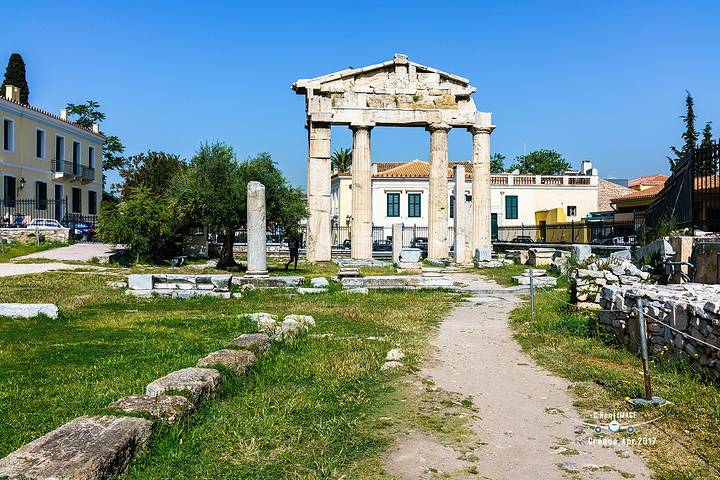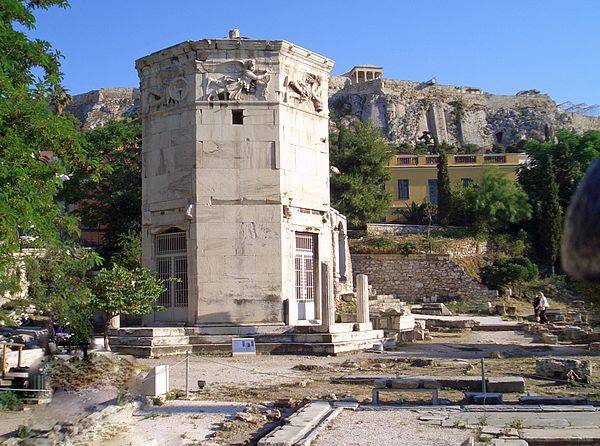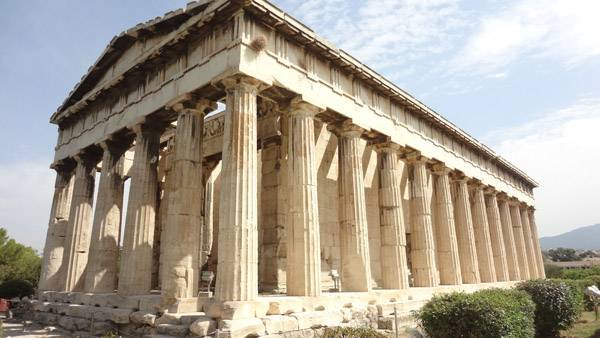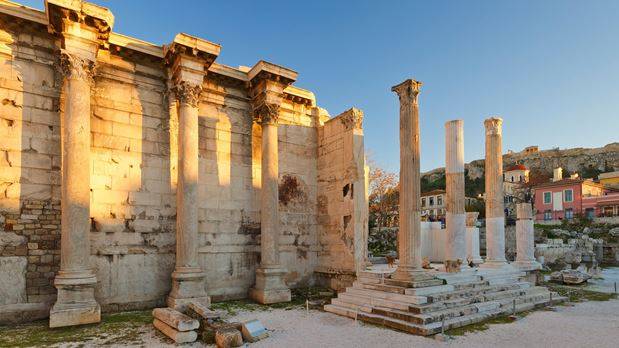The Theatre of Dionysus, built in the 6th century BC, is the oldest open-air theatre. This theatre, which could accommodate 17,000 people, once hosted countless tragedies by Aeschylus, Sophocles, and Euripides, as well as comedies by Aristophanes. Built on a hillside, the theatre is astonishingly large, seemingly embodying the great beauty of nature. In ancient Greece, watching theatre was not only the main artistic activity for the people of Athens but also an important aspect of city-state life.
The Roman Agora is a place full of magical imagination. Here, you can not only experience the characteristic architecture of the ancient Roman period but also get a close feel of the romantic stories from ancient Rome. The main attraction of the Roman Agora is the Tower of the Winds, which is believed by later generations to be a place storing great magic. In fact, it is a meteorological station established by a 1st-century Syrian astronomer.
The well-preserved Tower of the Winds was built in the 1st century BC and served multiple functions including a weather vane, sundial, and compass. The weather vane, notable for its octagonal shape, still has clearly visible carvings of figures on top and is located in a corner of the Ancient Roman Agora. As an ancient building, the Tower of the Winds has its own unique charm.
The Temple of Hephaestus is the best-preserved ancient Greek temple, dedicated to Hephaestus (the god of blacksmiths and metalworking) and Athena (the guardian goddess of Athens). The temple has 34 columns, and around the roof are carvings of nine stories from the 'Labors of Heracles'. In this city filled with myths and imagination, fully experience the leisurely sense of history.
The ruins of Hadrian's Library are located north of the Acropolis in Athens, built by Roman Emperor Hadrian in 132 AD. The library building is Roman-style, with study rooms, reading rooms, and classrooms inside. Come and experience the ancient library that has withstood the test of time!













